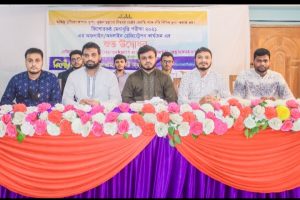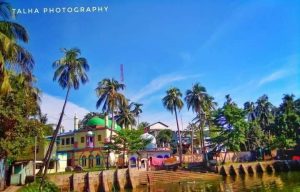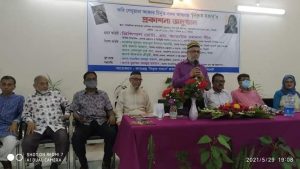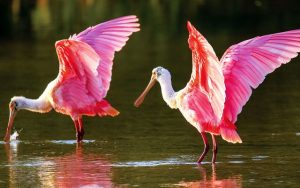Abdul Kadir Jibon:: Tanguar Haor is one of the biggest lake in Bangladesh . A Lot of Beel (most of the time those land watered), River and swamp area all together makes Tanguar Haor. Taker Ghat, Jadukata River , Barik tila are most beautiful places in Tanguar Haor. Tanguar haor also famous for migratory birds . It is the second place of Ramsha in Bangladesh, the first Sandarban.
The Haor is the name of low and wetland, it’s a unique place in terms of its beauty. Every season it’s have different look. I had the option to visit this place at rainy season but winter also a good time to visit. If you wish to observe the natural beauty of Bangladesh with close connection of Local life style, please visit the tanguar haor. I had stay one night at our bajra on the bank of Tanguar Haor. That’s a unique experience but you may aware that you have to sacrifice the sanitation facilities. You can also make a day trip. Must visit the Watch Tower of Tanguar Haor.
Tanguar haor is located in the Dharmapasha and Tahirpur upazilas of Sunamganj District under Sylhet Division in Bangladesh. It is a unique wetland ecosystem of national importance has come into international focus. The area of Tanguar haor including 46 villages within the haor is about 100km2 of which 2,802.36 ha. is wetland. It is the source of livelihood for more than 40,000 people. The Government of Bangladesh declared Tanguar haor as an Ecologically Critical Area in 1999 considering its critical condition as a result of overexploitation of its natural resources. In 2000, the hoar measure of land was declared a Ramsar site – wetland of international importance. With this declaration, the Government is committed to preserve its natural resources and has taken several steps for protection of this wetland.
It is one of the largest waterlands in the country and one of the most spectacular places to visit. Tanguar haor plays an important role in fish production as it functions as a ‘mother fishery’ for the country. It is also famous for migratory birds. Every winter the haor become home for 200 types of migratory birds. The haor is an important source of fish. In 1999-2000, the government earned 7,073,184 TKs as revenue just from fisheries of the haor. There are more than 140 species of fresh water fish in the haor. The more predominant among them are: ayir, gang magur, baim, tara, gutum, gulsha, tengra, titna, garia, beti, kakia etc. Hijal, karach, gulli, balua, ban tulsi, nalkhagra and other freshwater wetland trees are in this haor.
Plant species like Hizol (Barringtonia acutangula), Clematis cadmia, Crataeva nurvala, Euryale ferox, Nelumbo nucifera, Ottelia alismoides, Oxystelma secamone var. secamone, Pongamia pinnata, Rosa clinophylla, and Typha species are present. Tanguar Haor is Bangladesh’s leading internationally significant freshwater wetland. The livelihoods of the poor community largely depend on the natural resources of Tanguar Haor and hence its social and economic importance is high.
In the past, Tanguar Haor has been subject to ‘Elite Capture’; rich and well-connected individuals would control the resources. The resource was fiercely guarded, leading to conflict and violence. Declaration of Tanguar Haor as an Ecologically Critical Area in 1999 and a Ramsar site in 2000 provided an opportunity for the government to test a new management paradigm.
Tanguar Haor needed a sustainable management strategy, particularly considering its national and international status, in order to address the pressures on its resources. The major obstacle for initiating community-based management was the ownership of Tanguar Haor and leasing system for its fisheries resources. In 2001, management and ownership of Tanguar Haor was transferred to Ministry of Environment and Forests (MoEF), and subsequently the lease system was banned effectively. MoEF initiated a plan of pilot project in Tanguar Haor. A one-year extension currently in place is important in order to strengthen and deepen the successes so far achieved.
A collaborative management system is established for the conservation, stabilization and sustainable use of the natural resources of Tanguar Haor that generates significant improvements in the livelihoods of rural communities.
People love to visit tanguar haor in two session . 1. in winter session and 2. in rainy session . You can go to visit tanguar haor by two way. 1. Dhaka-sunamgonj by bus and than take a CNG to come Tahirpur Bazar than take a boat to visit tanguar Haor. 2. Dhaka-mohongonj by train than take boat to visit tanguar haor .You can stay one night in tanguar haor under Million Star.
The Haor is also known as the named ‘Naykury Kandar Chhoykury Beel’ to the local people
Written by: The Editor of The Earth of Autograph










